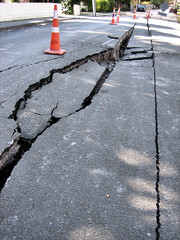
Search
Images for Earthquake damage; more images...
Westminster Street and Cranford Street Shops
Images, eqnz.chch.2010
PWS-2010-09-18-DSC2499
385 Worcester Street
Images, eqnz.chch.2010
PWS-2010-12-09-05521
Westminster Street and Cranford Street Shops
Images, eqnz.chch.2010
PWS-2010-09-18-DSC2488
Westminster Street and Cranford Street Shops
Images, eqnz.chch.2010
PWS-2010-09-18-DSC2481
Westminster Street and Cranford Street Shops
Images, eqnz.chch.2010
PWS-2010-09-18-DSC2479
Westminster Street and Cranford Street Shops
Images, eqnz.chch.2010
PWS-2010-09-18-DSC2485
Westminster Street and Cranford Street Shops
Images, eqnz.chch.2010
PWS-2010-09-18-DSC2475
Westminster Street and Cranford Street Shops
Images, eqnz.chch.2010
PWS-2010-09-18-DSC2492
Westminster Street and Cranford Street Shops
Images, eqnz.chch.2010
PWS-2010-09-18-DSC2482
Westminster Street and Cranford Street Shops
Images, eqnz.chch.2010
PWS-2010-09-18-DSC2491
Westminster Street and Cranford Street Shops
Images, eqnz.chch.2010
PWS-2010-09-18-DSC2487
Westminster Street and Cranford Street Shops
Images, eqnz.chch.2010
PWS-2010-09-18-DSC2484
Westminster Street and Cranford Street Shops
Images, eqnz.chch.2010
PWS-2010-09-18-DSC2483
Westminster Street and Cranford Street Shops
Images, eqnz.chch.2010
PWS-2010-09-18-DSC2471
Westminster Street and Cranford Street Shops
Images, eqnz.chch.2010
PWS-2010-09-18-DSC2489
Westminster Street and Cranford Street Shops
Images, eqnz.chch.2010
PWS-2010-09-18-DSC2480
Westminster Street and Cranford Street Shops
Images, eqnz.chch.2010
PWS-2010-09-18-DSC2476
Westminster Street and Cranford Street Shops
Images, eqnz.chch.2010
PWS-2010-09-18-DSC2493
Westminster Street and Cranford Street Shops
Images, eqnz.chch.2010
PWS-2010-09-18-DSC2473
Westminster Street and Cranford Street Shops
Images, eqnz.chch.2010
PWS-2010-09-18-DSC2490
Westminster Street and Cranford Street Shops
Images, eqnz.chch.2010
PWS-2010-09-18-DSC2478
Westminster Street and Cranford Street Shops
Images, eqnz.chch.2010
PWS-2010-09-18-DSC2477
Photograph by Paul Corliss 0127
Images, UC QuakeStudies
A photograph of a damaged footpath captioned by Paul Corliss, "Avonside and Retreat Roads post earthquake".
Development of a Seismic Damage Prediction Model Using Machine Learning
Research papers, University of Canterbury Library
Natural catastrophes are increasing worldwide. They are becoming more frequent but also more severe and impactful on our built environment leading to extensive damage and losses. Earthquake events account for the smallest part of natural events; nevertheless seismic damage led to the most fatalities and significant losses over the period 1981-2016 (Munich Re). Damage prediction is helpful for emergency management and the development of earthquake risk mitigation projects. Recent design efforts focused on the application of performance-based design engineering where damage estimation methodologies use fragility and vulnerability functions. However, the approach does not explicitly specify the essential criteria leading to economic losses. There is thus a need for an improved methodology that finds the critical building elements related to significant losses. The here presented methodology uses data science techniques to identify key building features that contribute to the bulk of losses. It uses empirical data collected on site during earthquake reconnaissance mission to train a machine learning model that can further be used for the estimation of building damage post-earthquake. The first model is developed for Christchurch. Empirical building damage data from the 2010-2011 earthquake events is analysed to find the building features that contributed the most to damage. Once processed, the data is used to train a machine-learning model that can be applied to estimate losses in future earthquake events.
Transcript of Max Lucas's earthquake story
Articles, UC QuakeStudies
A pdf transcript of Max Lucas's second earthquake story, captured by the UC QuakeBox Take 2 project. Interviewer: Laura Moir. Transcriber: Sarah Woodfield.
Transcript of Betty and Michael's earthquake story
Articles, UC QuakeStudies
A pdf transcript of Betty and Michael's second earthquake story, captured by the UC QuakeBox Take 2 project. Interviewer: Samuel Hope. Transcriber: Sarah Woodfield.
Transcript of Miriam's earthquake story
Articles, UC QuakeStudies
A pdf transcript of {participant name/ID}'s second earthquake story, captured by the UC QuakeBox Take 2 project. Interviewer: Joshua Black. Transcriber: Josie Hepburn.
Transcript of Michelle's earthquake story
Articles, UC QuakeStudies
An edited copy of the pdf transcript of Michelle's second earthquake story, captured by the UC QuakeBox Take 2 project. At the participant's request, parts of this transcript have been redacted. Interviewer: Jennifer Middendorf. Transcriber: Josie Hepburn.
Transcript of Tere Lowe's earthquake story
Articles, UC QuakeStudies
A pdf transcript of Tere Lowe's second earthquake story, captured by the UC QuakeBox Take 2 project. Interviewer: Samuel Hope. Transcriber: Lucy Denham.
Transcript of Tracey Waiariki's earthquake story (Part 1)
Articles, UC QuakeStudies
A pdf transcript of Part 1 of Tracey Waiariki's second earthquake story, captured by the UC QuakeBox Take 2 project. Interviewer: Lucy Denham. Transcriber: Lucy Denham.



